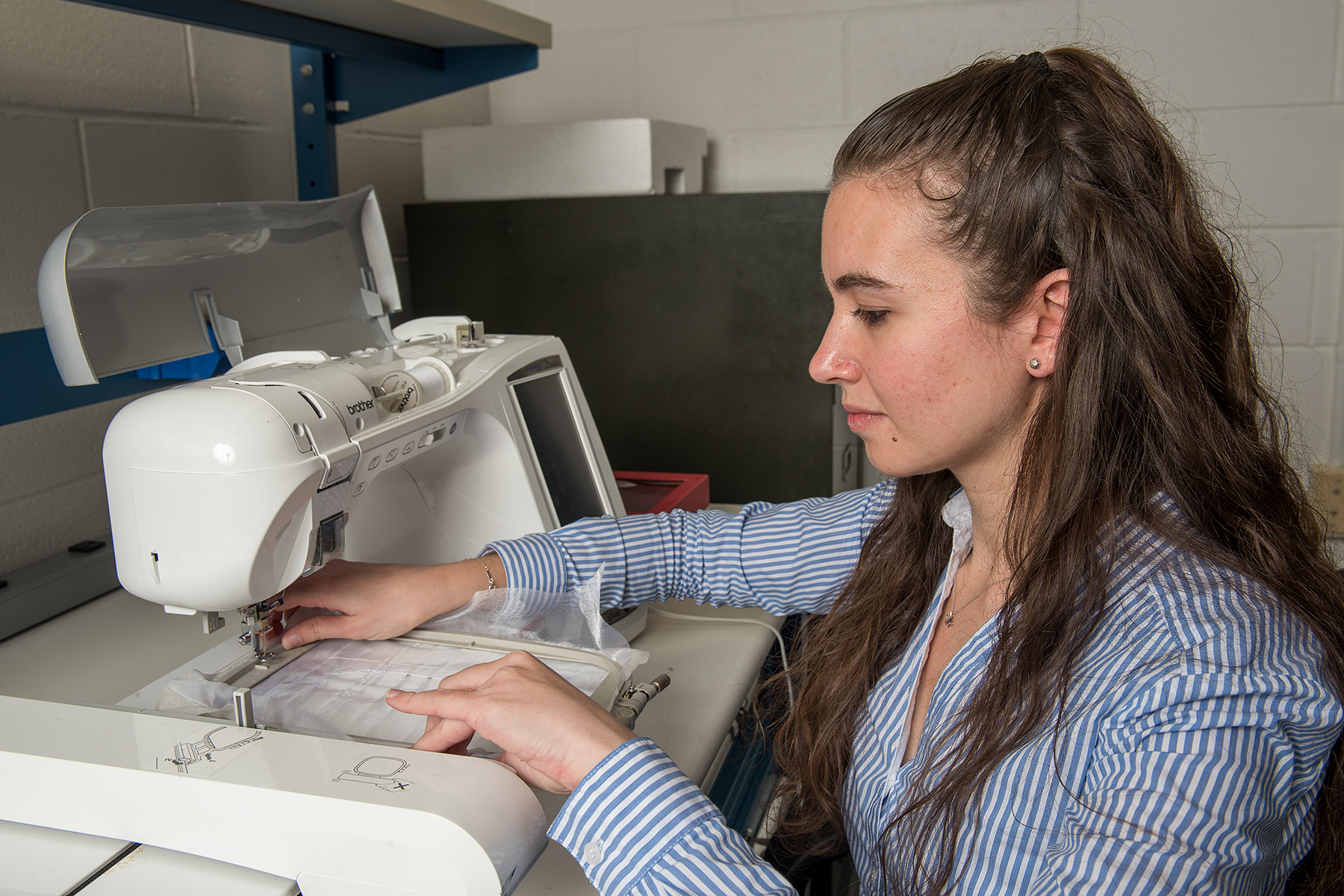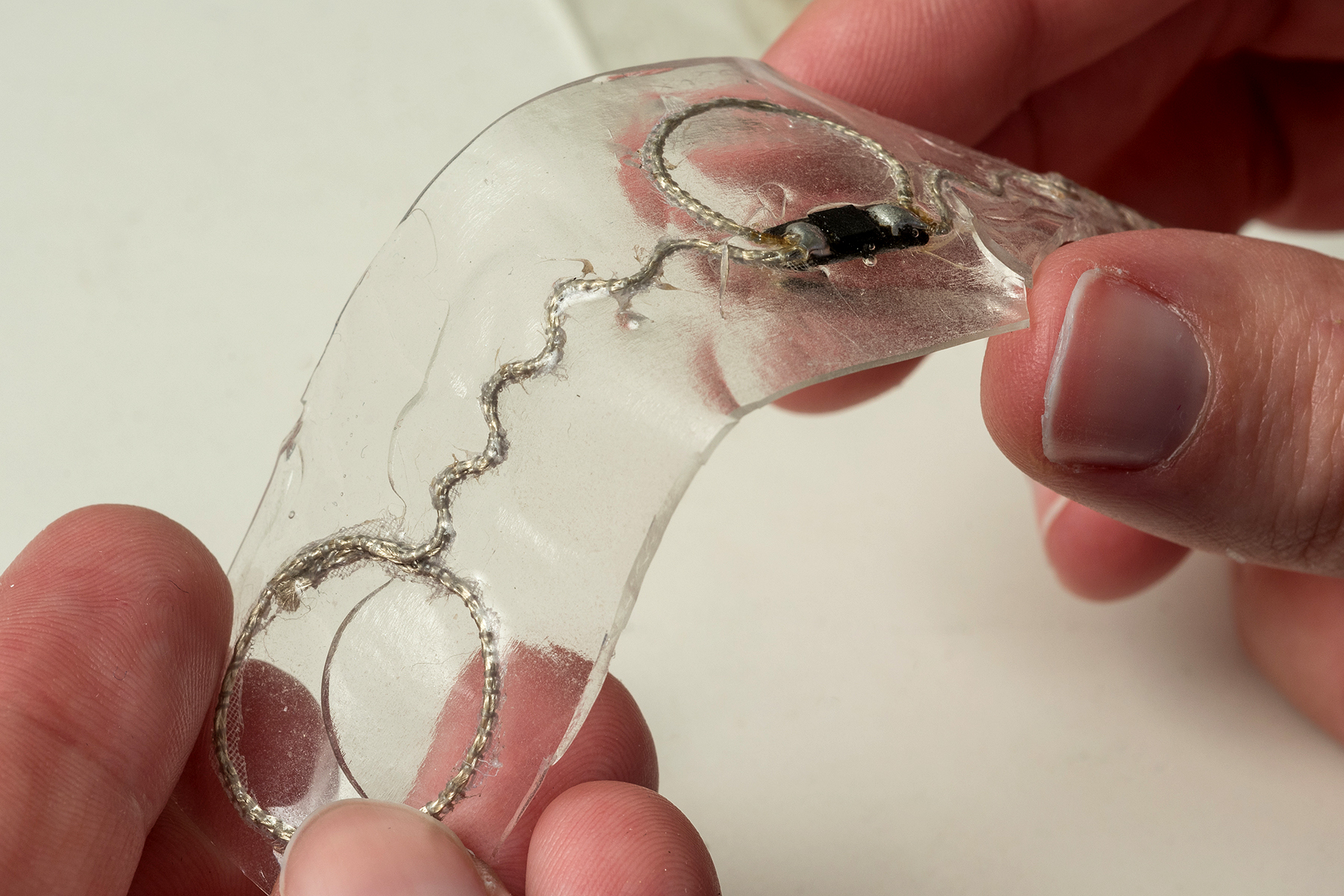Strategy April 20, 2016
Ohio State Pairs Embroidery and Electronics
Researchers have been able to dramatically increase the accuracy of embroidered circuitry.
Imagine a left-chest logo that could also boost the signal of your cellphone. Or an intricate stitched design that measures fitness levels. Or patches that help you keep track of your children or monitor an elderly parent or grandparent at risk of life-threatening falls. Recent breakthroughs in embroidered circuitry from the Ohio State University promise to turn your clothing into computers, bringing each of these scenarios a step closer to reality.
Electrical engineering professor John Volakis and research scientist Asimina Kiourti figured out how to embroider silver-coated polymers to a precision of 0.1 mm, using only a standard Brother sewing machine. Previously, the researchers had to work with much thicker conductive threads – made up of hundreds of filaments twisted together. Now, Volakis, Kiourti and other researchers at Ohio State are using threads only seven filaments thick. “The accuracy levels are much higher,” Volakis says. “If we make a bend or a corner, it’s not a rounded corner, it’s a real corner.”
Among the e-textiles the researchers have embroidered is a working broadband antenna that consists of more than half a dozen interlocking geometric shapes, each roughly the size of a fingernail. They form an intricate circle a few inches wide, with each piece transmitting energy at a different frequency. A 6-inch-wide spiral antenna they embroidered transmitted signals at frequencies of 1 to 5 gigahertz with near-perfect efficiency, according to the researchers’ tests. “Shape determines function,” Kiourti says. “And you never really know what shape you will need from one application to the next. So, we wanted to have a technology that could embroider any shape for any application.”
The researchers were also able to add nonconductive thread in various colors to create designs both functional and decorative. One embroidered circuit, for example, resembles the Ohio State “O” logo, with scarlet and gray thread embroidered among the silver wire. The circuits can be embroidered onto a thin organza, which is burned away afterward, or they can be sewn directly onto a more permanent fabric, Volakis says.
Antennas embroidered onto clothing could be used to boost the reception of your smartphone or send signals containing health and athletic performance data back to your device. The possibilities are endless, Volakis says. The next step, he adds, is figuring out how take such technologies from prototype to efficient mass production.
Volakis considers the work a revolution in the ancient field of textiles. “I certainly had no idea about embroidery myself. The first time I saw a sewing machine was my mother’s old Singer, but I never got to use it,” he says. “It’s a very old technology that we think of our grandmothers and mothers using. Nobody would think you could create electronics with it, but that’s exactly what we’re doing.”
Ohio State is a founding partner of the Advanced Functional Fabrics of America (AFFOA) Institute, a $75 million national manufacturing resource center. The public-private partnership announced by the U.S. Secretary of Defense earlier this year is led by MIT and draws on multiple universities’ research into wearable textile sensors and communication devices.






